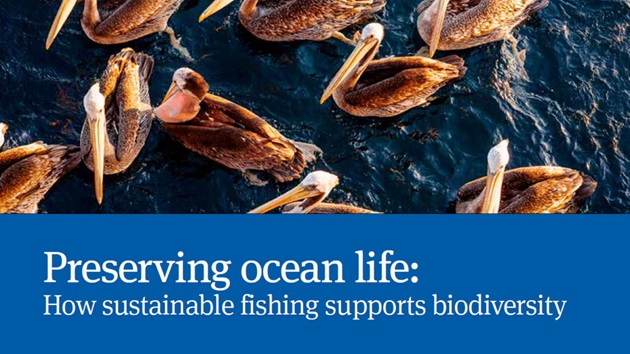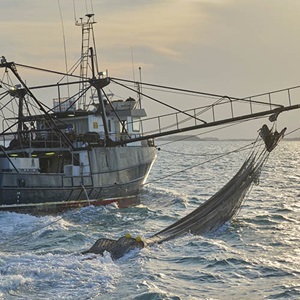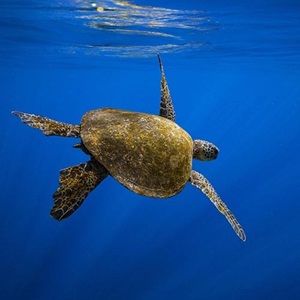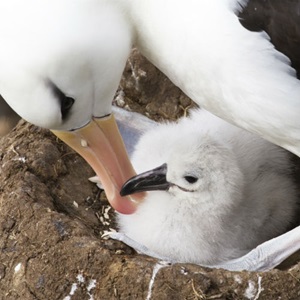Sustainably managing our natural resources will mean that our oceans remain productive, resilient and adaptable to environmental changes.
What is biodiversity?
Biodiversity refers to both the variety and the abundance of life on our planet. It includes all the different animals, plants and micro-organisms living on Earth and in the ocean, from tiny ants to giant whales.
Why is marine biodiversity important?
Biodiversity allows nature to be productive, resilient and adaptable to environmental changes. Such changes might be caused by global warming, the spread of disease, pollution, invasive species, overfishing or other human-related impacts.
Resilience
We say an ecological system is resilient if it keeps functioning even when the population of a species declines, or a species becomes extinct. A functioning ecosystem is one where natural processes are working effectively, including those that benefit humans, such as storing carbon, filtering water or providing food to eat.
Biodiverse and resilient marine ecosystems are made up of a large variety of different species. As on land, each species in the ocean has a particular role to play; from tiny krill - which provide omega-3 oils for humans, and food for whales -, to apex predators such as bluefin tuna that prey on smaller fish and keep their populations in check.
The more biodiversity becomes depleted, the less nature can provide the food, economic and cultural benefits it currently provides to humanity. But even if humans disappeared tomorrow, biodiversity would remain vital to the planet's success.
Does overfishing harm biodiversity?
Yes. Fishing that is unsustainable or destructive can seriously impact biodiversity. Around 37.7% of the world’s fish stocks are currently overfished, and if this continues there will be fewer fish in the ocean for future generations as well as less biodiversity.
Overfishing impacts not only the fish that are targeted for food but also other marine life that interacts with fishing vessels. Oceanic shark and ray species have declined by 71% since the 1970s, with overfishing the primary cause of decline.
Bycatch – or unwanted catch – is one of the leading threats to marine biodiversity. It is estimated that 9.1 million tonnes (around 10% of annual catches) are discarded by commercial fisheries each year.
How does the MSC Program help protect marine biodiversity?
The MSC program incentivises sustainable fishing practices that ensure target stocks are healthy, fisheries are well managed and the impacts on biodiversity are actively minimised.
A key component of the MSC Fisheries Standard is assessing a fishery’s impact on the wider ecosystem. Many fisheries that enter the MSC program are given conditions of certification, which are a series of improvement goals they must meet to keep their certificate.
From 2019 to 2022, these conditions led to a total of 437 improvements. This includes
- 80 improvements benefitting ecosystems and habitats and
- 166 improvements benefitting endangered, threatened and protected species and reducing bycatch among others.
The Australian Eastern Tuna and Billfish Fishery introduced circle hooks, de-hookers and line cutters to help mitigate turtle bycatch as well as implementing electronic monitoring on all its vessels.
In Greenland, scientists from ZSL (Zoological Society of London) are helping map the seabed floor to help fisheries avoid vulnerable marine ecosystems. The work has identified over 230 groups of organisms from underwater images and subsequently helped close all but two conditions relating to the wider ecosystem.
In Cornwall, hake fishers have used pingers – acoustic devices – to deter marine mammals from becoming entangled in gillnets, reducing harbour porpoise bycatch by 80%.
Our Fisheries Standard is also reviewed and updated regularly, in line with global best practices, policies and science. Our analysis shows that the average scores of fisheries significantly improve as they stay in the program. This shows that fisheries which remain in the MSC program actively improve their practices to reduce their impact on biodiversity.
Read our 2025 report
Supporting global biodiversity conventions with ocean data
The MSC program also contributes to the work of United Nations’ (UN) bodies such as the Food and Agriculture Organization (FAO) in several ways. Data from the MSC is used by the UN Environment Programme and other intergovernmental organisations to track progress towards international goals to end overfishing and protect biodiversity.
In 2020, the MSC’s contribution to sustainable fishing and progress towards biodiversity goals was acknowledged by the UN in its Post-2020 Framework for Biological Diversity.
How Sustainable Fishing Protects Ocean Biodiversity
How can seafood consumers help support marine biodiversity?
By using the blue MSC label, brands, retailers, chefs are rewarding responsible fishing operations and incentivising others to improve. When you choose to eat sustainably certified, wild-caught MSC labelled seafood, you are helping to support a healthier, more resilient and productive ocean.
There are thousands of MSC labelled products sold by retailers and restaurants around the world, making it easy to find sustainably sourced seafood. Look out for the ASC (Aqua Stewardship Council) label on farmed fish.




